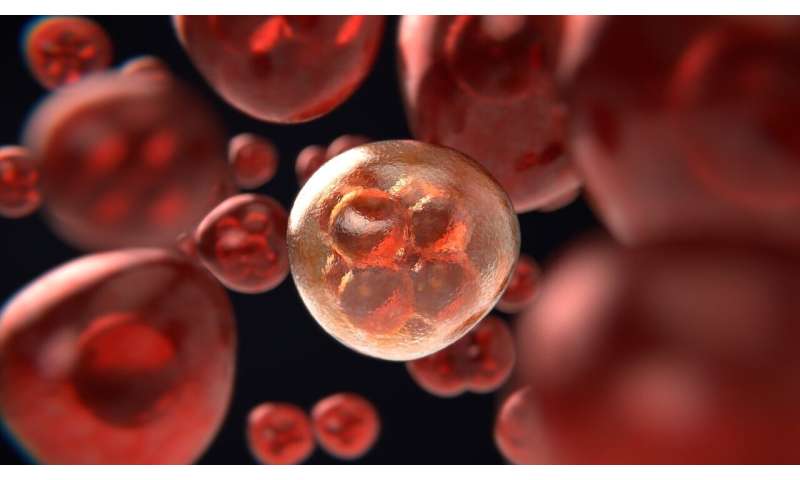Mastectomies have been performed for over 500 years, yet we still can’t talk about them

In the middle of the 17th century, Mrs Townsend found a lump in her breast. Diagnosed with breast cancer by a local physician, she underwent a mastectomy without anesthetic—an agonizing procedure.
Her bravery impressed the male surgeons who had gathered to watch the operation. One commented that he “had read that women would endure more than men, but did not believe it ’til now.” They stayed in town for several days to inspect her wound and see how it was healing. After this, Mrs Townsend disappears from the historical record. There is no news on how she felt about her changed body, or how others reacted to her one-breasted status.
While much of Mrs Townsend’s experience is mercifully alien, the silence that surrounds her post-mastectomy experience is eerily familiar. Each year, 55,000 women in the UK are diagnosed with breast cancer, and up to 40% will choose to undergo a mastectomy. Mastectomy patients are routinely offered surgical replacement of the breast tissue, whether with saline or silicone implants, a tissue transplant from elsewhere on the body, or a combination of the two.
Reconstruction is an important part of many women’s recovery. Yet it is not without its problems: 18% of patients return to hospital with post-operative complications such as infection. This, along with other factors, such as time taken off work, means that around 70% of patients turn down reconstructive surgery.
Despite these figures, the sight of one- or no-breasted bodies in the media is still rare. Under-representation is a common problem for people with visible bodily difference. But for mastectomy patients, this may be particularly acute: studies show that breast reconstruction is often presented as a normal and necessary part of restoring bodily “wholeness.”
What is it about breast cancer that has made mastectomy and its effects so hard to discuss throughout history?
The gnawing wolf
History suggests that our fear of cancer is deep rooted. The disease was first recorded in ancient Greece, where its propensity to “grip” the body of the sufferer caused it to be named after the crab, karkinos. In medieval and Renaissance Europe, doctors believed that cancer was caused by a buildup of sluggish melancholy humors in the affected part, behaving like a parasitic worm or a “gnawing wolf” in the way it devoured its victims. Desperate patients put raw meat on the cancerous area in hopes that the disease would eat the meat and not their bodies.
Throughout, cancer was viewed as primarily a woman’s disease. While physicians occasionally diagnosed testicular or skin cancers, internal cancers were impossible to pinpoint in living patients and often had symptoms similar to infectious diseases rife in the period. Cancers of the female reproductive system were slightly easier to diagnose with a physical examination, but the overwhelming majority of all diagnosed cancers were in the breasts.
Indeed, medical practitioners agreed that “where one has a cancer in any part besides, twenty have them in their breasts.” Noticing that post-menopausal women were the most likely to suffer from cancer, physicians concluded that when menstruation ceased, women were vulnerable to a buildup of bad humors, or fluids, in the womb. Unable to be expelled from the body, this toxic cocktail was, they believed, transported directly to the breasts via a special (now known to be non-existent) vein.
While medicines of mercury and arsenic might be tried, the horrifying recourse of mastectomy was the only effective means of treatment. First described in medieval texts, this procedure probably originated in antiquity but went unrecorded for many years. By the 17th century, surgeons—emboldened by their experience amputating limbs on European battlefields—started to perform and record more mastectomies.
Historical mastectomy
Based on newspaper reports, diaries and physicians’ handbooks, we can speculate that perhaps ten or 20 mastectomies took place each year during the 1600s, and considerably more in the 1700s.
Rates of mortality in these operations are hard to calculate. We know that for Daniel Turner, a skilful 17th-century surgeon, nearly 30% of patients he operated on for tumors died in his care. Considering that most of those operations would have been considerably less invasive than mastectomy, the survival chances of women having a breast removed must have been considerably less than 50%.
Though mastectomy was an established procedure, its effects were hardly ever discussed outside medical texts. The only place a one-breasted woman could be envisioned was the exotic figure of the Amazon, reported in travel books and histories as living in all-female groups, visiting neighboring tribesmen for sex as and when they pleased. However, when these warrior women appeared in drama, they did so with “normal” bodies. Actors (usually male) impersonated all kinds of disabilities, reflecting a culture in which bodily difference was widely, if often negatively, represented in ballads, folk tales and broadsides. But they never impersonated one-breasted women.
In patriarchal Renaissance society, this reticence makes sense. Women’s primary role was seen to be as wives and mothers. By threatening their perceived sexual attractiveness, and their ability to breastfeed, mastectomy displaced women from this role. Women’s voices went unrecorded, and male writers lacked a framework for talking about women’s bodies that did not focus on their sexual and reproductive value.
The same should not be true today. Yet modern discussions about cancer take more than we might realize from history. Doctors and scholars alike have noted the dominance of combative metaphors for cancer treatment, in a hangover from its characterisation as a hostile crab, worm or wolf. And we still lack positive language for talking about one-breasted or non-breasted women, beyond the platitudes of “cancer survivor.”
Source: Read Full Article
